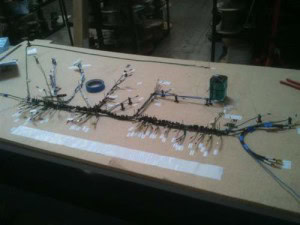Cable assembly testing is a detailed process, where the product is put through various tests to check whether it meets or exceeds the application’s requirements and specifications. In this post, we shall take a look at some common cable testing processes.
Types of Cable Assembly Testing
Cable assemblies can be designed to meet either the customer’s specifications, or the regulations of safety and quality standards. Irrespective of the specifications, there are a few common tests that are performed on all assemblies. These are given below.
- Electrical Testing: This is the most important test that needs to be performed. The cables should be tested for open wires, incorrect wiring, and the possibility of the cable shorting out. There is a simple way to perform all three tests. The connector of the assembly needs to be linked to an electrical fixture with the help of a mating connector. This will allow you to check for shorts between shields and conductors, and ensure proper wire pin placement.
- Visual Testing: As the name suggests, this test involves examining all the physical features of the cable, and ensuring that there are no signs of deterioration, damage, or corrosion. The cable is also examined when it is installed in equipment. There are a wide range of points that come within this test, including:
- Checking supply intake before removing assembly cover
- Examining accessories for signs of damage
- Ensuring that enclosures are properly secured
- Inspection of sockets and connectors
- Checking if assembly complies with application specifications
- Mechanical Testing: The tests in this phase are designed to evaluate the mechanical properties of the cable. They analyze whether the cables can meet a variety of application requirements. These can include elongation, tensile strength, and crush and impact resistance.
- Signal Integrity Testing: As the name suggests, the tests in this phase analyze signal strength, and whether the cable can maintain it in an application. Features of these tests include error testing, crosstalk, and whether the signal strength can be maintained with the addition of splices, filters, or connectors.
Cable assembly testing procedures ensure that the products adhere to all industry standards, and meet application requirements. When working with a cable assembly manufacturer, always enquire about his testing procedures and the various standards he complies with. This will help you in finding the right manufacturer to work with.

